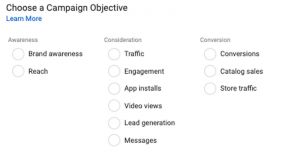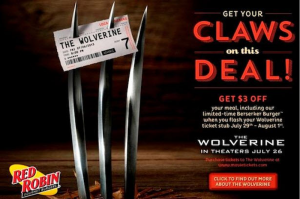
Maybe I’m biased but if there is one thing I can predict with 100% accuracy, it’s this: content marketing will become even more important in 2017.
You’ve seen this first-hand: businesses are investing more and more in creating and distributing content.
In fact, according to one estimate, content marketing will be a $300B industry by 2019.
All this growth means that industries related to content marketing – such as SEO – are also evolving. Tactics that work today might fall flat in the next two years.
What are the content marketing trends SEOs should watch out for? What changes will impact SEO in 2017 and beyond?
In this post, I’ll show you 5 content marketing trends and how they are changing SEO.
1. Marketers Will Spend More Time Optimizing Videos
As marketers adopt innovative ways to capture user’s attention, video has become an integral part of content marketing.
After all, it is also the most engaging type of content out there.
It is also the fastest growing content-type over the years.

Video is also the reason for the exponential growth in mobile data usage as this hosting facts graph shows:
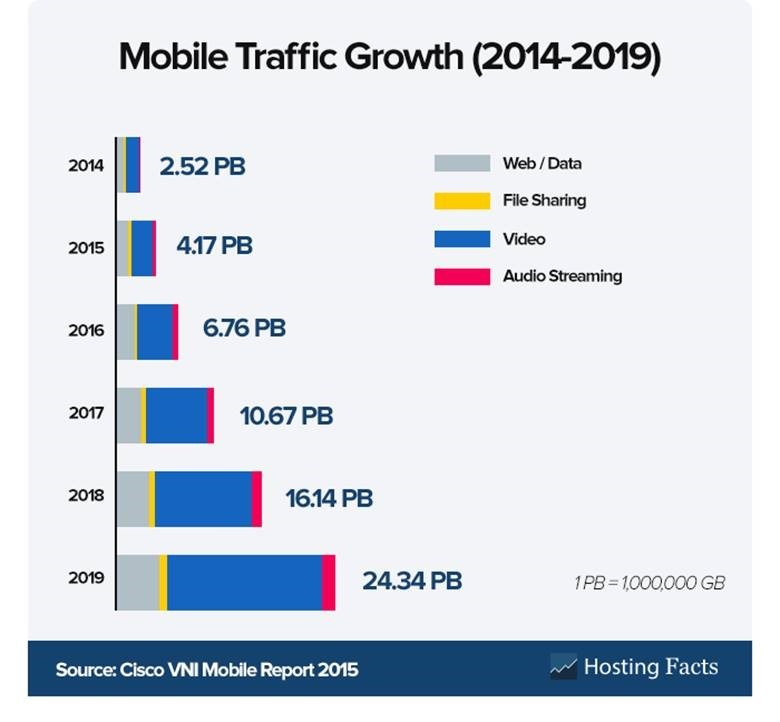
Consider this: an average user is exposed to approximately 32 videos a month.
The sheer volume of video being consumed means that marketers have poured in huge amounts of money into video content. It has worked for them to get better rankings and ROI.
According to a research by Aberdeen via Vidyard, marketers who use video grow revenue 49% faster than non-video users.
It goes without saying, YouTube is the preferred channel for video marketing. It is the second largest search engine with 500 hours of content uploading every minute.

Such enormous amount of content has brought more and more searches on YouTube. Even when you search on Google, a lot of search queries (55%, as per one study) will show video results.

How It Impacts SEO
All these statistics point to three trends:
- Video consumption will continue to increase
- Marketers will invest more and more resources to producing and promoting video content
- YouTube has established itself as the de-facto home for all video.
To stay competitive in the SERPs – both on Google/Bing and YouTube – we’ll see marketers invest resources into optimizing videos.
You’ll start seeing lengthy video descriptions and keyword-rich, SEO-optimized titles.
You’ll also see marketers start SEO campaigns exclusively to get their videos ranked higher. Some agencies might even start offering video optimization packages that focus on building links, optimizing video titles + descriptions and adding click-worthy thumbnails to videos.
Takeaways
- Create more video content. If you aren’t doing so already, now is the time to start creating more video content for yourself and your clients. Read this post on video content strategy to get started.
- Start video-focused SEO campaigns. To get your videos to rank higher, start an SEO campaign for them. This should include title + description optimization, changing video thumbnails for higher clicks, and building relevant backlinks.
2. Live Video Will Show Up In Search Results For Trending Keywords
In 2014, video content accounted for 64% of all internet traffic.
By 2019, a Cisco study suggests that 80% of the world’s internet traffic will be video.

Live video will play a big role in getting this number to 80% in the next five years.
We’ve already seen live video streaming blow up with both Facebook and Twitter (via Periscope) heavily investing in it.
In fact, the Periscope growth chart looks straight out of a startup’s dream:
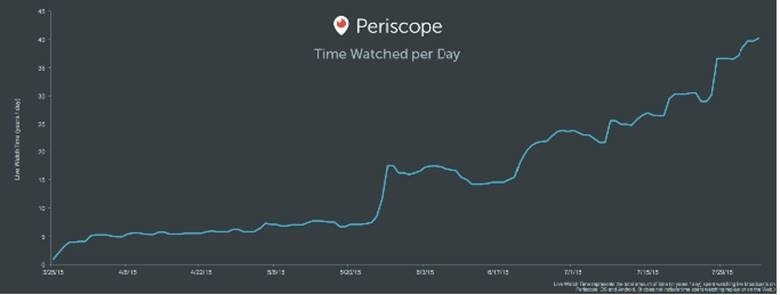
For marketers, live video makes perfect sense – it’s quick and easy to produce, requires no editing, and is “raw”.
As live video consumption grows, brands are quickly responding by incorporating live streaming into their marketing efforts.
For example, Buzzfeed live streamed two of its employees trying to make a watermelon explode with rubber bands.

This rather simple (and inexpensive) rubber band experiment – it involves some rubber bands and a watermelon – lasted nearly 40 minutes.
Yet, the escalating tension ended up attracting over 807,000 viewers at its peak in popularity. These viewers not only shared the video with their friends, but also engaged heavily with the video in real-time
.

Dunkin Donuts’ Valentine day live streaming is another great example. In this video, Dunkin’ explored ”test kitchen” for viewers, showing how it creates new products.
The end result of the experiment was a huge donut themed wedding cake.

This gave Dunkin’ more than 36,000 viewers. This might not sound like a lot, but considering the fact this many people were watching someone literally make the cake in real time just goes to show the potential of live streaming.
How It Impacts SEO
As live video becomes an increasingly important source of information, Google will start showing live streams in the search results – especially through YouTube Live.
It will be just like you see normal YouTube videos in the search result, except these will be for trending keywords (such as a football game or a big event like the US elections).
Facebook is already doing it in its search results. If a trending topic has a live video associated with it, Facebook will show a “Live” tag next to it.
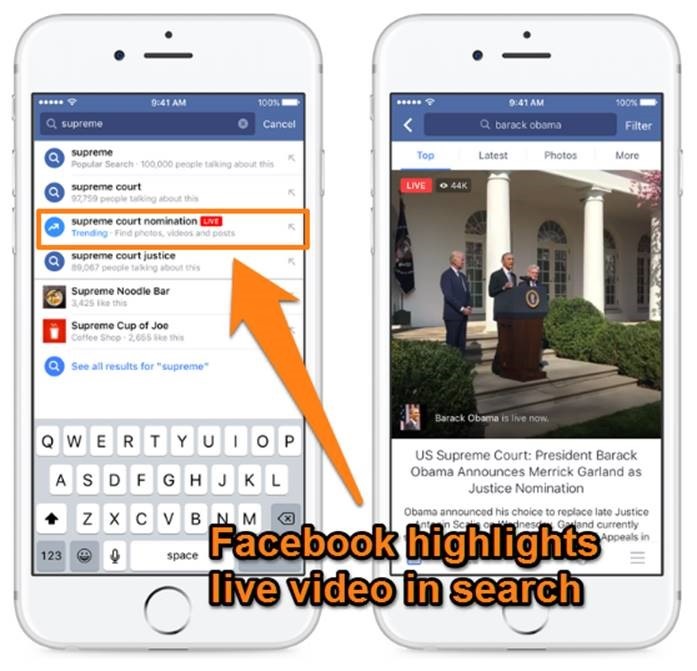
Takeaways
Live streaming is a great marketing technique and clearly a next step forward for video marketing. If you are already video marketing, it makes sense to jump on live-streaming bandwagon.
You’ll not only need to produce live video but also optimize it for search. These might be early days, but competition will soon heat up, especially when it comes to covering major events. With several competing streams for the same eyeballs, the best-optimized streams (in terms of keywords, concurrent viewers, descriptions, etc.) will win out.
3. Marketers Will Use Native Advertising To Solve Their Content Distribution Problems
88% of B2B marketers use content marketing in their marketing strategies
According to a report by Curata, 42.5% of companies are increasing their content marketing staff levels in 2016.
With so many businesses incorporating content marketing into their marketing mix, the competition has grown in almost every niche.
As a result, driving traffic to content – even stellar content – has become a challenge for marketers.
With people turning to adblockers, even buying ads doesn’t always work.
In fact, Adblock Plus, the world’s most popular ad blocking extension, has seen a massive surge in downloads (to 500M) in the last few years.
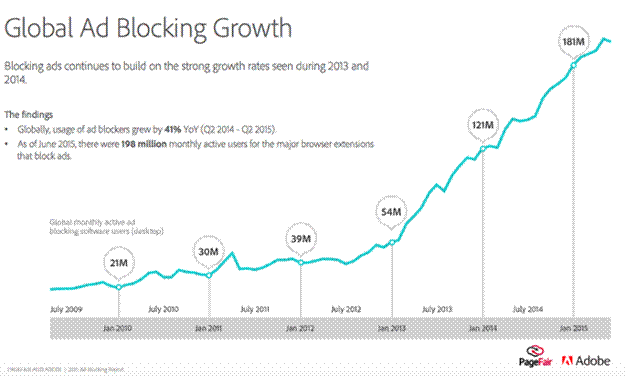
This is where native marketing comes in.
In a nutshell, native advertising is a form of online advertising that matches the form and function of the platform on which it appears.
As Copyblogger puts it:
“Native advertising is paid content that matches a publication’s editorial standards while meeting the audience’s expectations.”
IBM’s sponsored content on Atlantic is a good example of this.
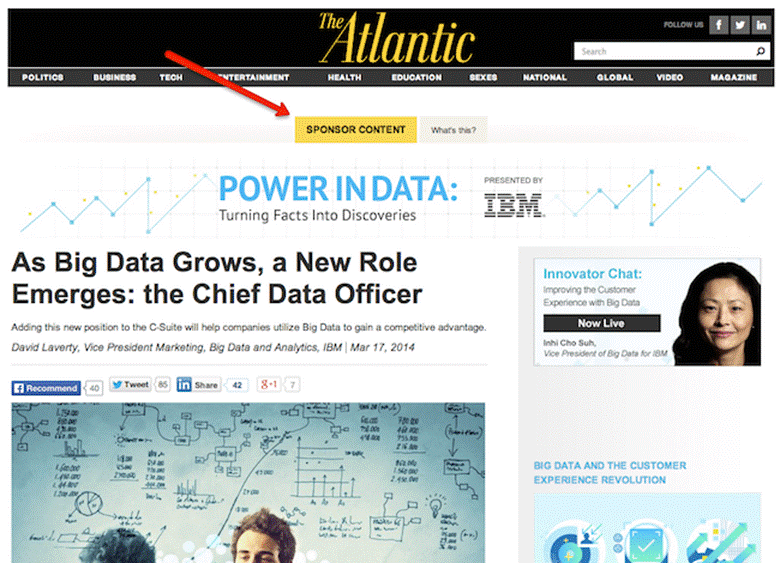
As you can see the ‘sponsored content’ is embedded with the IBM brand.
Furthermore, the article is written by David Laverty, Vice President of Marketing at IBM but it matches the editorial and design style of Atlantic.
Twitter and Facebook ads to some extent also count under native advertising since they allow you to add ‘sponsored’ posts to your target’s feed.

How It Impacts SEO
Native advertising, especially through self-serve platforms such as Outbrain and Taboola, solves one of the biggest problems marketers face today: getting traffic to their content.
As native advertising grows, you might see SEOs involved in:
- Optimizing native ads (like the “Recommended for you” content ads below blog posts) for more clicks by testing headlines and images.
- Creating native content that increases brand mentions or backlinks from readers and other bloggers/editors.
- Driving traffic from native content into a sales funnel
Takeaways
- Identify shortcomings in your content distribution and make a list of closely aligned publications where you can use sponsored content.
- Experiment with self-serve content distribution platforms to spread your content wider
4. Bite-Sized Content Will Make A Comeback In SERPs
Recently, Brian Dean at Backlinko analyzed 1 million Google search results to see which factors correlate with first-page search engine rankings.
Based on SERP data from SEMRush, they found that longer content tends to rank higher in Google’s search results. The average Google first-page result contains 1,890 words.
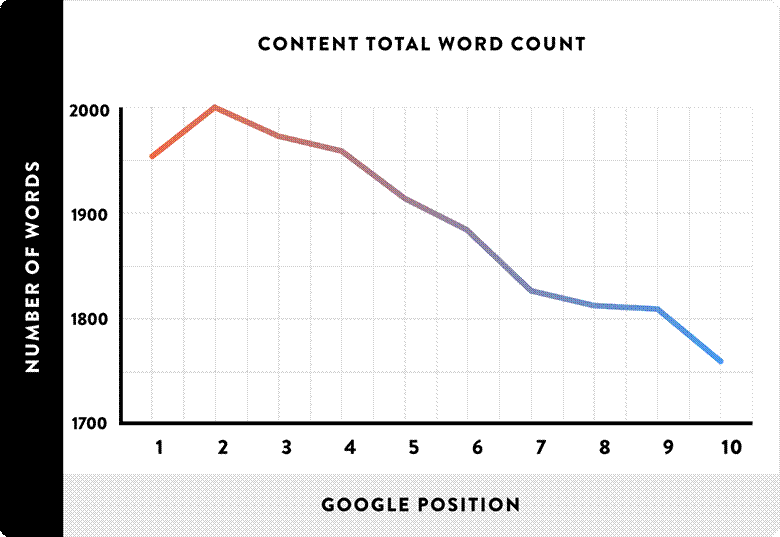
Sure, longer content ranks well and it has been for quite some time.
But because of this, businesses are pouring money into longer and longer content even for topics that don’t deserve long content.
People are already getting tired of reading the same content over and over again, in different words.
This puts you, the marketer, in a quandary – do you optimize your content for search or do you optimize for readers?
As experienced SEOs will tell you, the answer to this question is always the same: optimize for readers.
Because of this, I predict we will likely see a comeback of short content, especially for topics that don’t require in-depth answers.
How It Impacts SEO
Instead of focusing on long-form content, we will see SEOs shift towards offering bite-sized answers to long-tail questions.
Which is to say, instead of writing about “marketing tools”, you might create a short Q&A for “what is the best marketing tool for professional photographers looking to increase social shares?”.
We will also see large brands and publications switch to bite sized sharable infographics, visuals and videos in innovative formats. Vox is already doing it with their cards.

Takeaways
- Identify long-tail questions that require short, bite-sized answers
- Create short, bite-sized answers to these questions and distribute them on your site and social media.
5. We Will See Deeper Collaboration Between Influencers & Brands
Influencer marketing works well when done correctly. According to a report by Nielsen, 92% of people trust recommendations from individuals) over brands.
Many marketers, however, equate “influencer marketing” with lengthy, boring roundup posts.

This era of one-time campaigns with different influencers is (thankfully) coming to an end. Such campaigns have no longevity nor do they do a good job of leveraging the influencer’s existing audience loyalty.
I predict that in 2017, we will see brands developing meaningful relationships with influencers. Instead of shallow roundup posts or group interviews, we will see marketers collaborate with influencers to create something unique for both their audiences.
For example, consider how Birchbox collaborates with leading bloggers to co-create subscription boxes.

This is meaningful collaboration that helps both the influencer and the brand.
Here’s another example: Starbucks tapped Vine star Lele Pons to create a “sip-off” video that was looped 17M times.

This collaboration worked for both the influencer and Starbucks’ favor since they essentially leveraged each other’s traffic. And the fans got a funny video in return.
How It Impacts SEO
If you’re thinking of doing yet another roundup post or lazy interview in the name of “influencer marketing” to get some backlinks, stop.
Instead, consider investing in more substantial content collaborations with influencers.
You might do an in-depth interview with a series of takeaways, like TheStorytellerMarketer.
Or you might do Q&As with successful people that focus on showing rather than telling, like IndieHackers.
The point is, stop chasing quick SEO wins that start investing in relationships.
Takeaways
- Identify up to 10 influencers you would want to develop a relationship with.
- Pitch them mutually beneficial content ideas that you can collaborate on.
- Optimize this content to maximize SEO benefits.
Over To You
As goes content marketing, so goes SEO. As the former evolves, the latter can’t be far behind.
In 2017, we will brands invest more and more in live video, optimize content for YouTube, and focus on developing relationships with influencers – all under the umbrella of content marketing.
This will impact SEO in more ways than one. SEOs will have to start focusing on optimizing native and video content. They will also be called on to help content creators develop optimized bite-sized and collaborative content.
Which of these trends do you think will catch on? Which of these will fail? Comment below!
5 Content Marketing Trends That Will Change SEO In 2017
The post 5 Content Marketing Trends That Will Change SEO In 2017 appeared first on Search Engine People Blog.
Search Engine People Blog(62)



